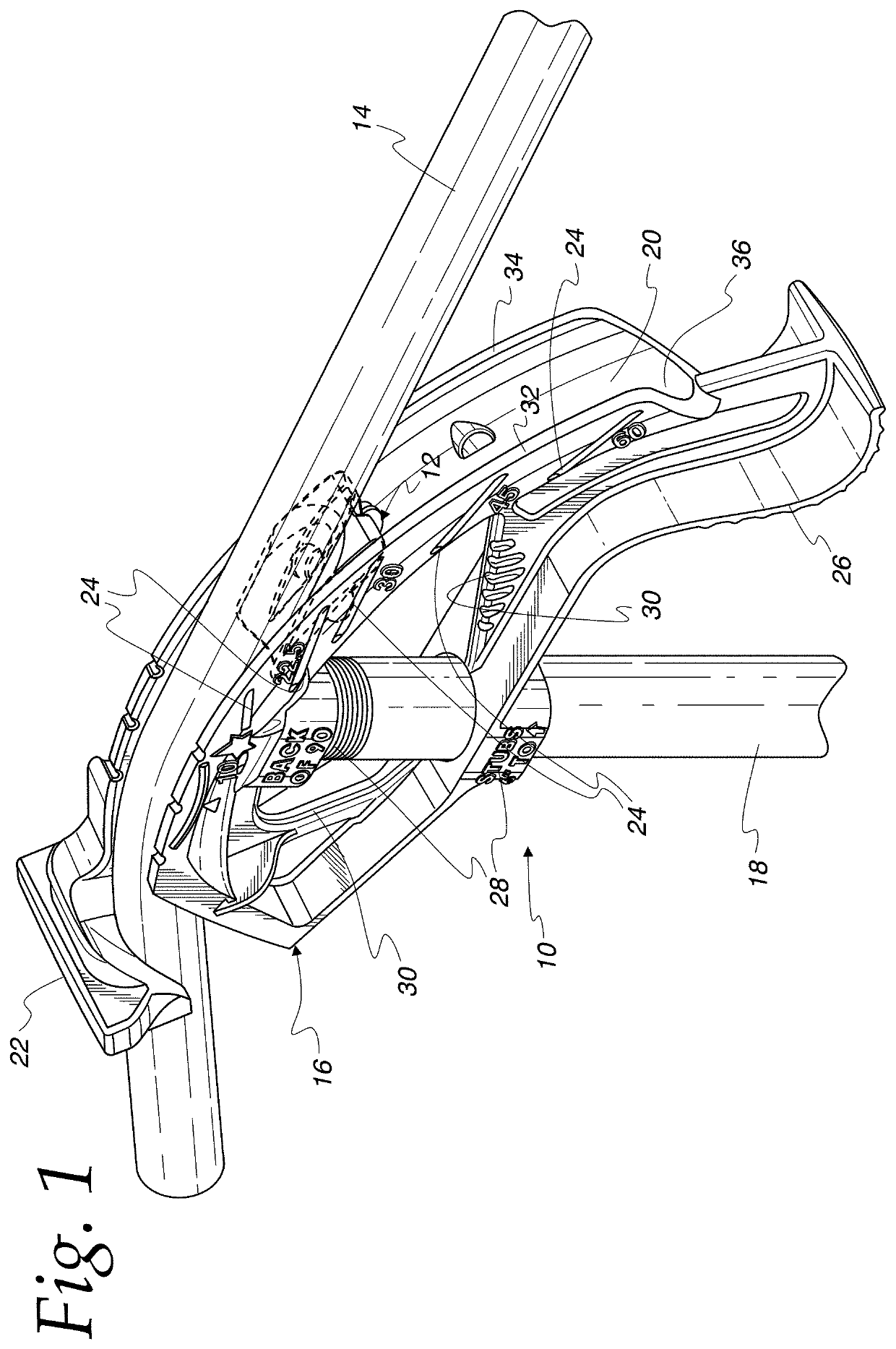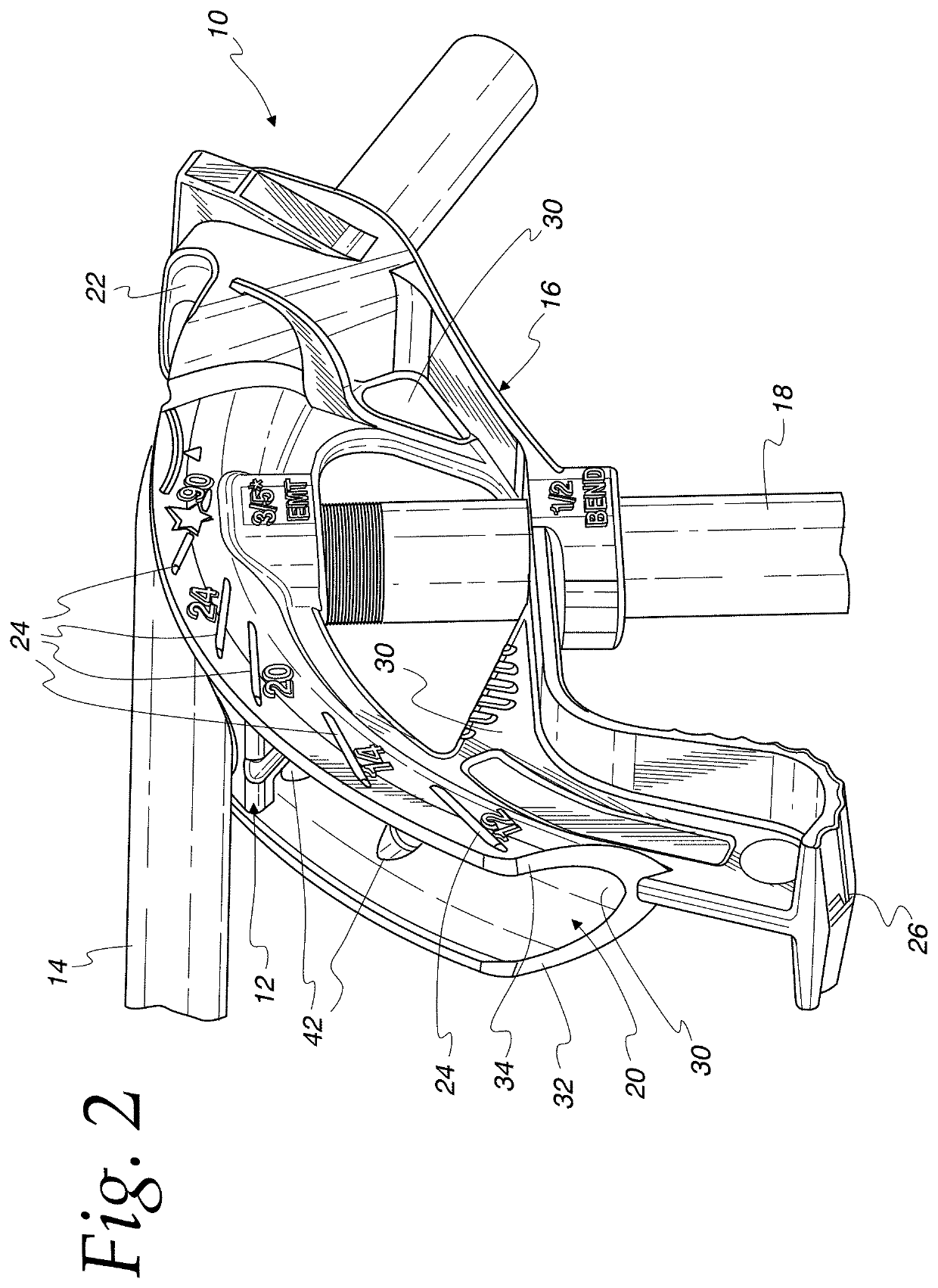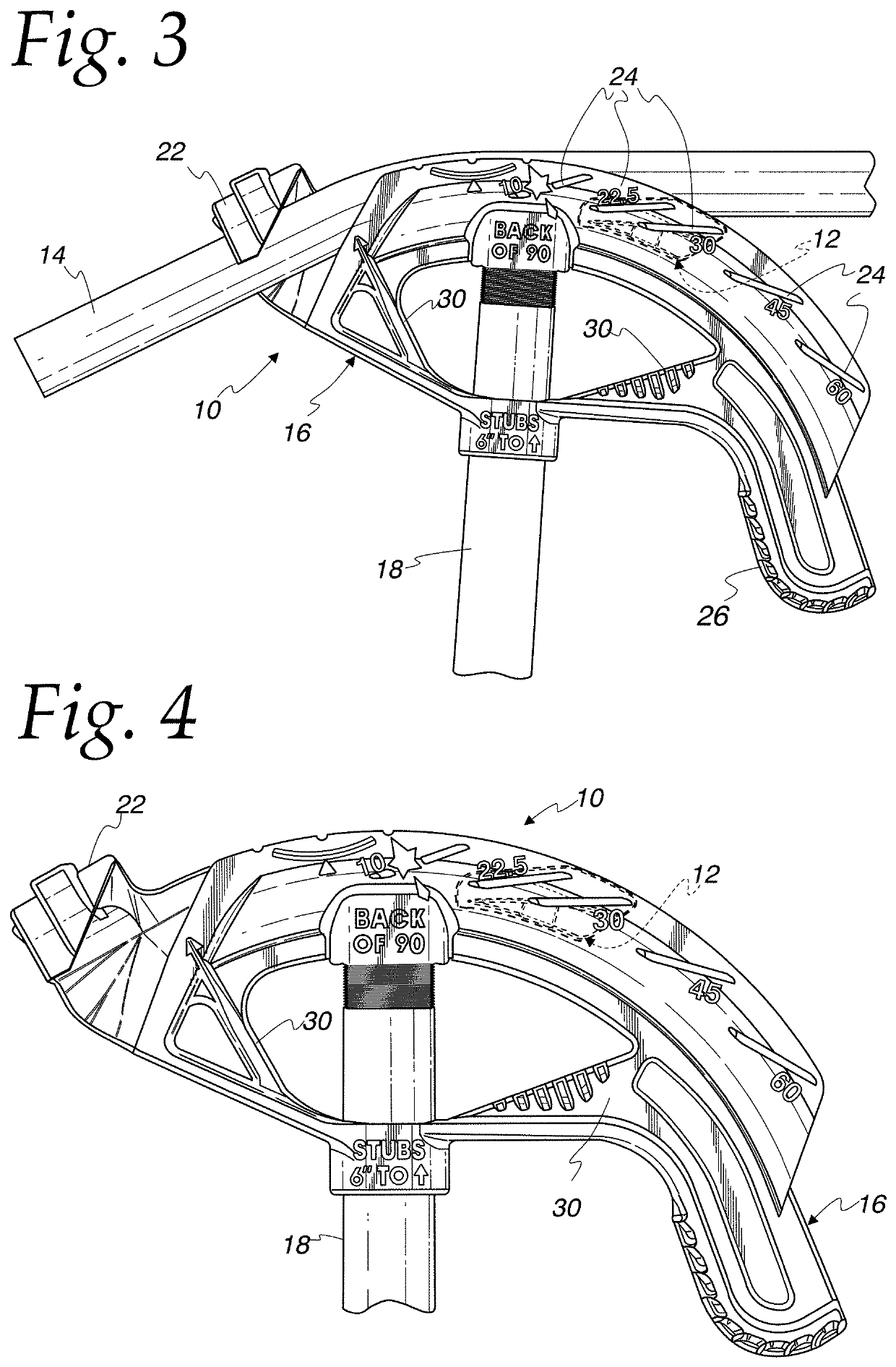Manual conduit bender with angle setter
a technology of benders and benders, applied in the field of manual conduit benders, can solve the problems of benders risking that a conduit may be easily damaged by the addition of structures
- Summary
- Abstract
- Description
- Claims
- Application Information
AI Technical Summary
Benefits of technology
Problems solved by technology
Method used
Image
Examples
Embodiment Construction
[0055]As best seen in FIGS. 1-4, a manual conduit bender 10 is shown in the attached figures with an angle setter 12 that can be selectively attached to the conduit bender 10 to allow users to precisely set the most common bend angles, make accurate and repeatable bends in a conduit 14, including from user to user, and reduce bending time thereby increasing efficiency while limiting the possibility that a conduit 14 will be damaged during the bending process.
[0056]The manual conduit bender 10 includes a bender head 16 and a handle 18. As is known and typical for manual benders, the bender head 16 is a unitary, one-piece component (i.e., made from a single piece of material), and includes an arcuate channel 20 configured to receive a length of conduit 14 and apply a bending force to the conduit 14 as the conduit 14 is being bent, a conduit hook / grip 22 configured to hold a conduit 14 and apply an opposing bending force as the conduit 14 is being bent, visual bend angle indicators 24 ...
PUM
| Property | Measurement | Unit |
|---|---|---|
| Length | aaaaa | aaaaa |
| Angle | aaaaa | aaaaa |
Abstract
Description
Claims
Application Information
 Login to View More
Login to View More - R&D
- Intellectual Property
- Life Sciences
- Materials
- Tech Scout
- Unparalleled Data Quality
- Higher Quality Content
- 60% Fewer Hallucinations
Browse by: Latest US Patents, China's latest patents, Technical Efficacy Thesaurus, Application Domain, Technology Topic, Popular Technical Reports.
© 2025 PatSnap. All rights reserved.Legal|Privacy policy|Modern Slavery Act Transparency Statement|Sitemap|About US| Contact US: help@patsnap.com



